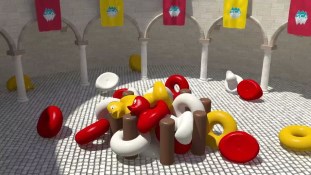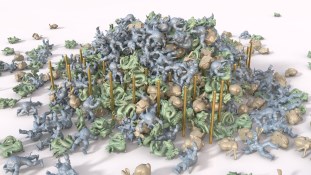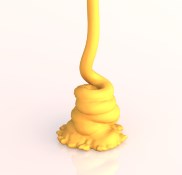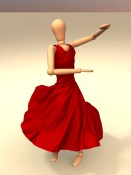Physically-Based Animation
Semester: |
WS 2020 |
Type: |
Lecture |
Lecturer: |
|
Credits: |
6 ECTS credits |
Contact: |
bender@cs.rwth-aachen.de |
Find a list of current courses on the Teaching page.
Type |
Date |
Room |
|---|---|---|
| Lecture | Tue, 10:30 – 12:00, starting October 27 | Online |
| Lecture/Exercise | Thu, 14:30 - 16:00, starting October 29 | Online |
Due to the present situation regarding COVID-19, our courses and seminars for the winter semester 2020 will take place on digital platforms. We primarily intend to use Zoom to facilitate real-time teaching activities and group meetings. You may download the Zoom client for your platform at https://zoom.us/download. Prospective course participants should make sure that they are members of the course room in RWTHmoodle by contacting the instructors if they have not already been added. The connection details (room URL/ID and password) for each course's Zoom room will be provided to students through RWTHmoodle. In order to support RWTH students and staff with the use of digital tools like Zoom, the CLS group has made available a number of handbooks and guides at the following URL: https://video.cls.rwth-aachen.de/gebrauchsanweisungen/.
We would like to remind students that the use of digital platforms for teaching introduces additional privacy concerns. In particular, it is strictly prohibited to make recordings of live teaching sessions, or to use additional tools such as screen-capture software or film cameras to circumvent this is.
The physically-based simulation of rigid bodies, deformable solids and fluids is an important and active research topic in computer graphics and an essential part of many modern computer tools in a wide range of application areas such as virtual prototyping, animation software for digital production including special effects in film and animation movies, computer games, and training simulators – just to mention a few. In these application areas interactive simulations are often of particular interest, where a user can interact in real-time with the simulated bodies.

|

|

|

|

|
This lecture course gives an overview over the most important research areas in physically-based animation. In particular, we will consider the following topics:
- basics of physically-based animation
- particle systems
- rigid bodies
- numerical integration
- simulation of deformable solids using discrete and continuous models
- hair simulation
- elastic rods
- cloth simulation
- soft bodies
- fluid simulation
- collision detection and collision response
- physics engines

